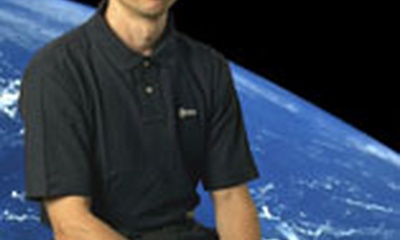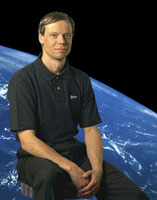University of Nova Gorica conferred a honorary doctorate
On November 22, 2006, the Senate of University of Nova Gorica conferred a honorary doctorate (doctor honoris causa) upon Dr. Christer Fuglesang, an astronaut of the European Space Agency ESA, as a recognition of his outstanding achievements in the field of science and development of space missions and life in space.
Dr. Christer Fuglesang was born on March 18, 1957 in Stockholm, Sweden. He studied at the University of Stockholm, where he obtained his doctorate in Experimental Particle Physics in 1987. He continued his career as an experimental high energy physicist and chiefly worked at CERN (European Organization for Nuclear Research) in Geneva. At CERN, he worked on the UA5 experiment, which studied proton-antiproton collisions at the energy of 540 GeV.
In 1980s he became a Fellow of the CPLEAR, through which he also collaborated with Slovene scientists presently working at University of Nova Gorica. The aforementioned international group of scientists studied the violation of most basic symmetries in nature. The group’s most remarkable achievement was the discovery of the arrow of time in the microcosm. He continued his career by working on the project regarding the construction of the world largest hadron collider LHC.
In 1990, Dr. Fuglesang returned to Sweden and obtained a position at the Manne Siegbahn Institute of Physics, Stockholm. Two years later, however, he decided to continue his career as an astronaut and joined the Astronaut Corps of the European Space Agency (ESA) in May 1992. In 1995, he was selected member of the backup crew for the Euromir 95 mission. Besides obtaining a licence for a qualified astronaut of the American agency NASA in 1998, he was also awarded the Russian 'Soyuz Return Commander' certificate. In the meantime, Dr. Fuglesang continued with his research and was involved in the SilEye experiment, which investigated light flashes in astronauts’ eyes on the international space station MIR. The same type of research is being continued on the International Space Station (ISS).
Dr. Fuglesang has also initiated the DESIRE project to simulate and estimate the radiation environment inside the ISS.
Even prior to the accident of the space shuttle Columbia, he was selected crew member of the STS-116, which will with the expected delay was launched toward the ISS on December 7 2006. Dr. Fuglesang’s assigned duties within the STS-116 mission are mainly of scientific and technical nature.
During his successful career, Dr. Christer Fuglesang has been presented numerous international awards. Moreover, an Honorary Doctorate from Umeå University in Sweden was conferred upon him in 1999.


